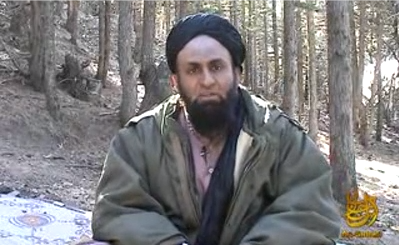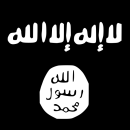Since last month’s free and fair elections in Tunisia, much of the focus has been on Ennahda’s victory, the formation of a new constitution-writing Constituent Assembly, and how to rebuild the shattered economy. Yet these important matters threaten to obscure another significant challenge to the country’s nascent democracy: Salafism. Although the extremist ideology has not yet taken root to the same degree as in Egypt, Jordan, and the Gulf states, the new openness in Tunisian society has allowed Salafi elements to widely propagate their message — one that undergirds the intellectual foundations of jihadism and, as such, poses a potential danger to the country’s stability. To counter this threat, Washington should consider engaging Tunisia’s new government on appropriate deradicalization and training efforts.
Ansar al-Sharia in Tunisia
One of the Salafi groups that has benefited from the country’s new openness is Ansar al-Sharia in Tunisia (AST). Founded in late April, a few months after the fall of President Zine al-Abidine Ben Ali’s regime, the group is headed by spiritual leader Sheikh Abu Ayyad al-Tunisi. It also takes religious advice from popular Tunisian Salafist Sheikh al-Khatib al-Idrisi, who was imprisoned for several years during the Ben Ali era. AST is especially active in the working-class Bab al-Khadra neighborhood of Tunis, with members attending al-Kambes and Malik bin Anas Mosques and becoming involved with the local mosque committee.
Similar to the youth revolutionaries who led the Tunisian uprising, one of the key aspects of AST’s dawa (Islamic propagation) activities has been its ability to bypass the mainstream press and harness social media to bring its message to the masses. AST runs a blog and also has two Facebook pages, one for the group proper and the second for its media apparatus, al-Qairawan Media Foundation (QMF). Since April, when AST announced its presence online, the number of its postings has grown each month, as has its number of “friends.”
AST’s largest advocacy project has been raising awareness of the plight of Muslim prisoners, most notably Tunisians who fought with al-Qaeda in Iraq (AQI) during its height in 2005-2007 and remain in Iraqi jails. The group has also demanded the release of Sheikh Omar Abdul Rahman, the blind religious leader of Egypt’s al-Gamaa al-Islamiyah who was convicted and imprisoned in the United States for his role in the 1993 World Trade Center bombing, and Abu Qatadah al-Filastini, al-Qaeda’s European spiritual leader currently serving time in Britain. In addition to holding peaceful sit-ins outside the Iraqi embassy in Tunis, AST has demonstrated in front of the Tunisian Ministry of Foreign Affairs to call for the release of a handful of its “brothers.”
The group also reveres Yosri bin Fakher Trigui (a.k.a. Abu Qadamah al-Tunisi), who was captured in Iraq in 2006 and executed last month for his role in the bombing of the Shiite tombs at Marqad al-Imamain al-Hadi and al-Askari. In fact, AST’s media outlet portrays him as a martyr, creating Photoshopped images of him overlaid with symbols glorifying his death, including the logo of the “Islamic State of Iraq,” AQI’s successor group. Additionally, AST’s Facebook page posted a music video placing Trigui among two other illustrious “martyrs,” Usama bin Laden and Abu Musab al-Zarqawi. And when his body was returned to Tunisia on November 23, the group played a prominent role in the funeral, which was attended by more than a thousand people, many of whom carried banners and placards with Islamic slogans. In a further indication of Trigui’s status, the premier online jihadist forum Shamukh al-Islam featured custom photos extolling his “martyrdom” on its front page for two weeks.
Against the Elections
Unlike the Salafi groups in Egypt that have decided to take part in elections, AST is far more doctrinal and purist in its interpretation of the Quran. As such, it opposes engaging in parliamentary politics and has not established a legal party. Indeed, in the lead-up to last month’s elections, it distributed literature warning Tunisians against voting, which it depicted as an infringement on God’s sovereignty. For example, one of the brochures, “The Idol of Democracy,” implicitly referred to engagement in democracy as a polytheistic act. And the day before the vote, AST wrote a stern warning to Islamists participating in the election, declaring that they would regret their actions on the Day of Resurrection.
In addition, the group tried to deter potential voters by reposting fatwas and videos from popular Salafi-jihadist sheikhs arguing against democracy. For example, it highlighted an edict by Sheikh Abu al-Mundher al-Shanqiti — a member of the sharia committee of Menbar al-Tawhid wa al-Jihad (The Pulpit of Monotheism and Jihad), the premier online resource for Salafi-jihadist intellectual materials — proclaiming the un-Islamic character of democratic elections. It also highlighted Shanqiti’s fatwa against Ennahda, characterizing the Islamist party’s program as a violation of tawhid (monotheism), describing its secretary-general Rachid Ghannouchi and his “ilk” as heretics, and declaring that Ennahda’s positions on jihad, dhimmis (protected peoples e.g., Christians and Jews), kuffar (infidels), women, and music all “pollute” Islam.
Nonviolent Jihadists?
Although AST has not engaged in violence, it clearly sympathizes with al-Qaeda’s worldview. In addition to posting content from al-Qaeda leader Ayman al-Zawahiri and prominent online adherents such as Hani al-Sibai, the group has also explicitly promoted the terrorist network’s jihadist cause. For example, during last month’s Eid al-Adha holiday, AST released a statement congratulating the “mujahedin” of the Afghan Taliban, the Islamic State of Iraq, the Caucasus Emirate, the Islamic Maghreb Emirate, and “loved ones” in Somalia. The group also asked God “to grant victory to the mujahedin, raise the word of Islam, and bring together Muslims and rout the enemies of Islam, like the Jews, Christians, atheists, and apostates.”
Indeed, AST’s program is similar to those of al-Muhajiroun in Britain and Revolution Muslim in the United States, insofar as they promote a radical interpretation of Islam without explicitly endorsing violence. Yet actions such as attacking secular students and taking the dean of the University of Manouba hostage on November 28 for banning the veil suggest that Tunisia’s Salafis are becoming more brazen in their attempts to change the country. In the coming months, then, the new government will need to begin the process of containing Salafism alongside the tasks of writing the new constitution and reviving the economy. Left unchecked, Salafist trends could destabilize the nascent transition from authoritarianism to democracy.
For Washington, this challenge provides an opportunity to engage Tunis on security and deradicalization in the context of a democratic Arab state. It also provides a good barometer for determining the extent to which Ennahda is willing and able to transform into a truly moderate Islamic political party.








